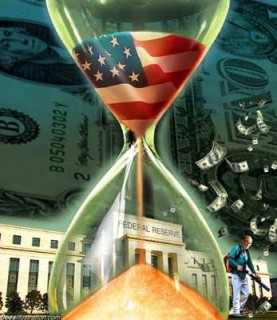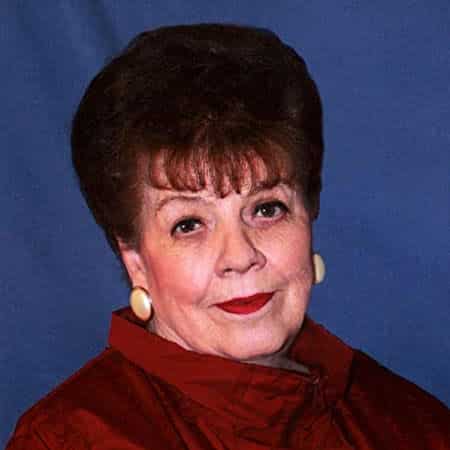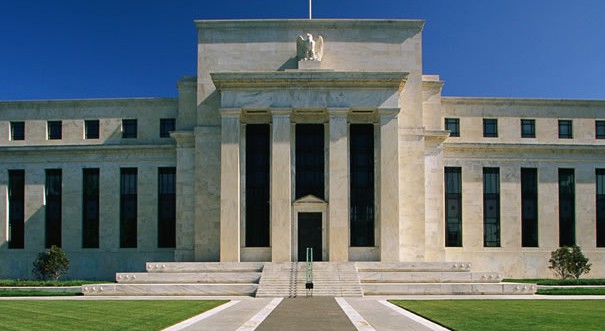What is the Federal Reserve? – Part 3
… by Marilyn MacGruder Barnewall, Global Financial Affairs Editor
July 8, 2014
An old saying tells us, “A rose by any other name is still a rose.”

Unfortunately, the same cannot be said about the Federal Reserve System. First, most people refer to it as the Federal Reserve Bank. It is not a bank. It is a system. Second, the Federal Reserve System is not federal.
It is a privately held corporation owned by bankers… most of whose names are seen on Wall Street (though international banks now own larger and larger shares of the Federal Reserve System, placing control of America’s economy in the hands of non-American foreigners).
Before talking about what the Federal Reserve System does, one other important fact needs to be mentioned: The Federal Reserve is an unlawful organization. Let’s take a look at the Constitution of the United States.
Article 1 Section 8 of the Constitution says the following:
The Congress shall have Power To lay and collect Taxes, Duties, Imposts and Excises, to pay the Debts and provide for the common Defence and general Welfare of the United States; but all Duties, Imposts and Excises shall be uniform throughout the United States;
To borrow money on the credit of the United States;
To regulate Commerce with foreign Nations, and among the several States, and with the Indian Tribes;
To establish an uniform Rule of Naturalization, and uniform Laws on the subject of Bankruptcies throughout the United States;
To coin Money, regulate the Value thereof, and of foreign Coin, and fix the Standard of Weights and Measures;
To provide for the Punishment of counterfeiting the Securities and current Coin of the United States;
To establish Post Offices and Post Roads;
To promote the Progress of Science and useful Arts, by securing for limited Times to Authors and Inventors the exclusive Right to their respective Writings and Discoveries;
As you can see, THE CONGRESS, not the Federal Reserve System, “shall have the Power to lay and collect Taxes, Duties, Imposts (which means taxes) and Excises” (taxes on consumer goods). Article 1 Section 8 says THE CONGRESS, not an organization called the Federal Reserve, is to coin Money, regulate the Value thereof, and of foreign Coin.”
When the people of America want to change the Constitution, how do they do it?
The Constitution says CONGRESS has the responsibility for our money and its value. If we want an organization called the Federal Reserve System to assume responsibility for these things, what do we need to do to make it constitutionally possible – to make it lawful? If you said “We need to pass an Amendment to the Constitution if we want to change it,” you’re exactly right! Was an Amendment to the Constitution passed by the Congress and sent to each of the states for a vote of the people before the Federal Reserve System was created by Congress? Again, if you said “no,” you’re absolutely correct
Interestingly, we had a “national bank” twice in our history – a national bank that performed the functions of a central bank (which is what the Federal Reserve is supposed to be). In the history of the two central banks in early American history, the Congress wasn’t yet so corrupted and it placed a 20 year contract on “The First Bank of the United States” after George Washington signed it into being. In 1816, the Second Bank of the United States was created. Both were so hated by the public, they were done away with when their 20 year contracts ended.
The current mess we have – the Federal Reserve System – started with a trip to Jekyll Island in 1910, three years before the passage of the Federal Reserve Act. These are the men who went to Jekyll Island and plotted to establish a central bank in America: Senator Nelson Aldrich (now you know where Nelson Rockefeller got his name), former Harvard University professor of economics Dr. A. Piatt Andrew, J.P. Morgan & Co. partner Henry P. Davison, National City Bank (today Citibank) president Frank A. Vanderlip, and Kuhn, Loeb and Co. partner, Paul M. Warburg (representing the interests of the Rothschilds).
On December 23, 1913 – most of the Congress had gone home for the holidays so there is a question as to whether a quorum was even present for this vote – the Congress voted for the Federal Reserve Act. So the Federal Reserve System is unconstitutional and unlawful. That’s no conspiracy theory; it’s proven, in the black and white text of the Constitution and the red of the blood our Founders shed for our Republic of the United States of America.
There is nothing unusual about Congress overstepping its authority. Remember the lowering of the age required to vote – from 21 to 18? The Congress passed that, too. One of the states complained that Congress was overstepping, trying to change what the Constitution says. The Supreme Court agreed and the Congress did what was necessary and sent an Amendment to each state for a vote of the people. That’s what should have been done if they wanted to legitimize the Federal Reserve Act of 1913.
In addition to being unlawful, the Fed also created the concept of fractional-reserve lending which has created huge amounts of “money.” Many people believe fractional-reserve credit is based on the 10 percent withheld from consumer/bank deposits but that “fractional reserve” goes to the FDIC to make funds available to either “save” or help liquidate failed banks. Fractional-reserve banking is based on bank loans made. If Bank A makes a $1 million loan, it can place 10 percent ($100,000, in this case) of that loan on deposit with the Federal Reserve System and receive a $900,000 credit which it can then loan to the public or corporate America — or corporate Poland, corporate Ukraine, or wherever. The $900,000 is usually loaned to the depositing bank at the Fed Funds rate which for the past several years has been about 1/4 of 1%. That is far less than banks pay in hard costs for deposits — checking or savings — and so it is very attractive to them. Once the $900,000 is depleted, that same bank (using that same initial deposit of $100,000 — or 10% of the $1 million loan) can now have access to 80 percent of the $1 million total — or, $800,000 in Fed Res credit at a very low interest rate. After the $800,000 is loaned by the depositing bank, then $700,000 (or 70%) of the $1 million loan originally made is made available by the Federal Reserve. This process continues all the way down to 0%.
Fractional-reserve lending has done more to destroy the value of U.S. currency than any other government or Federal Reserve program. It is, in my opinion, the reason the Federal Reserve has kept its borrowing rate so low for so long… to encourage the destruction of the dollar (or Federal Reserve Note, or whatever you want to call it). It is the same strategy used to bring down the Soviet Union Ruble. It just uses different players and a different plan: Flood the market with low-cost currency… far lower in cost than the currency’s stated market value.
A recent audit showed that during the period from December 1, 2007 through July 21, 2010 the Fed made $16 trillion dollars in loans to US banks and corporations and to foreign banks. Foreign banks? That’s right… foreign banks. The bank bailout of September 2008 was nothing compared to secret loans made by the Federal Reserve System about which the Congress was never informed. To place this extraordinary sum in perspective, the US GDP (Gross Domestic Product) is about $14 trillion. The US total national debt is about $18 trillion.
Thanks to Congressman Ron Paul who kept pressure on the House of Representatives to pass legislation ordering the General Accounting Office audit of the Fed. It was only a partial audit, but it was better than nothing.
The loans were to cover up secret bank and corporate bailouts. They were made to prevent the banks and corporations who borrowed the money from bankruptcy (now that’s a good loan loss risk, isn’t it — a company that will go bankrupt without the loan?). I haven’t seen the documentation, but reliable sources say the money was loaned at nearly zero percent (.01%) interest – as in 1/10th of 1%.
Citigroup, Inc (Citibank): $2.5 trillion
Morgan Stanley: $2.04 trillion
Merrill Lynch & Co.: $1.949 trillion
Bank of America Corporation: $1.344 trillion
Barclays PLC (United Kingdom): $868 billion
Bear Sterns Companies, Inc.: $853 billion
Goldman Sachs Group, Inc.: $814 billion
Royal Bank of Scotland PLC (UK): 541 billion
JPMorgan Chase: $391 billion
Deutsche Bank AG (Germany): $354 billion
United Bank of Switzerland AG: $287 billion
Credit Suisse Group AG (Switzerland): $262 billion
Lehman Brothers Holdings, Inc. – NYC: $183 billion
Bank of Scotland PLC (UK): $181 billion
BNP Paribas SA (France): $175 billion
Dexia SA (Belgium): $105 billion
Wachovia Corporation: $142 billion
Dresdner Bank AG (Germany) $123 billion
Societe Generale SA (France): $124 billion
So, now that we know the Federal Reserve System is not only unlawful under the Constitution, has created a program that appears designed to destroy America’s currency, and we also know it takes part in unlawful activities involving banks and corporations around the world over which it has no jurisdiction, let’s look at how it is structured.
The Federal Reserve Act was passed on December 22, 1913 by Congress… just prior to its annual Christmas recess. It was signed into law the next day, December 23rd, by President Woodrow Wilson.
![clip_image002[2]2](https://www.veteranstodayarchives.com/wp-content/uploads/2014/06/clip_image00222-320x320.jpg) The Act transferred the right to print currency from the United States Congress to an independent and privately-owned entity calling itself a bank but which is not a bank – changing the Constitution which cannot be changed without Amending it.
The Act transferred the right to print currency from the United States Congress to an independent and privately-owned entity calling itself a bank but which is not a bank – changing the Constitution which cannot be changed without Amending it.
The Fed is somewhat federal in form, but is very privately owned and operated. President Wilson lived to regret signing The Federal Reserve Act and, on his deathbed, made the following statement:
“I am a most unhappy man.
“I have unwittingly ruined my country.
“A great industrial nation is controlled by its system of credit. Our system of credit is concentrated. The growth of the nation, therefore, and all our activities are in the hands of a few men.
“We have come to be one of the worst ruled, one of the most completely controlled and dominated governments in the civilized world.
“No longer a government by free opinion, no longer a government by conviction and the vote of the majority, but a government by the opinion and duress of a small group of dominant men.”
Basically, the Federal Reserve System was given a cleverly deceptive name and gave Americans a private money monopoly which is owned by its member banks but controlled by too big to jail banksters. It is run utilizing a highly complex system designed to ignore or evade truth rather than being transparent. In truth, the Federal Reserve System has unlimited drawing rights (the right to create money) on the full faith and credit of the United States – in case you haven’t thought about what that means, “full faith and credit” means on your back and on my back.
Our tax dollars pay the interest on the Federal Reserve System’s loan interest charged to the government. This right to sell Treasury Bonds and otherwise manage the American economy by creating money whenever it wants so it can give $16 trillion to foreign banks and corporations costs the Fed nothing… but the government pays the Fed for the right to borrow money from it. We taxpayers pay interest on those loans! Sounds crazy, doesn’t it? It is crazy! You know what’s even more crazy? We, the American taxpayer, are on the line for paying the debts of the Federal Reserve System. At least, that’s what they say. I happen to think we are not and will explain why in a separate article about immoral debt, but in the meantime, why do Americans tolerate this kind of nonsense? This middle man, this wholesaler of our currency is a totally unnecessary entity. We don’t need a currency wholesaler!
The Federal Reserve System is comprised of 7 Governors who serve as the Board of Governors and who meet in Washington, DC. The 7 Governors are nominated to the position by the President of the United States and are confirmed by the Senate. Since today it is an accepted fact of life that Presidential appointments are political favors or payoffs, the political nature of the Federal Reserve System should surprise no one.
All U.S. banks are regulated by the Federal Reserve, directly or indirectly. Under recent legislation, all financial institutions (including credit unions) fall under the purview of the Federal Reserve. Only nationally-chartered banks are required by law to be members. New York’s Wall Street banks own a majority share of the Fed. The larger the member bank, the more Federal Reserve corporate stock it owns and the greater degree of control it exercises over the Fed’s policies.
If you’ve wondered why New York banks seem to have so much control over the Fed, perhaps that helps you understand. If you’ve wondered why Wall Street’s investment banks were so anxious to become part of the commercial banking industry – it is commercial, not investment banks, that hold stock in the Federal Reserve System – now you know why Phil Gramm (who was R-TX and an economist to boot) had to get the Gramm, Leach, Blyley Act passed to replace the Glass Steagall Act (which prevented investment banks from merging with commercial banks).
In my opinion, one of the best things the American people could do to regain control of their system of finance would be to eliminate the Federal Reserve System and absorb the duties and activities into the Treasury Department, putting Congress once again on the line as the Constitution requires.
That way, they wouldn’t be able to hide behind the skirts of The Federal Reserve System, acting as if they have no control over the economic choices of our nation. I have grave doubts as to the honesty and integrity of the Treasury Department, though. There is a better solution called “state banks.” I started researching and writing about them about four years ago. I will write an article about state banks for this series.
Under such a system, Congress would have no way to run away from or otherwise hide from its ill-gotten monetary decisions designed to buy the votes of idiots who don’t understand that “Thou shalt not covet…” means you shouldn’t put your welfare hand in your neighbor’s pocket and take what is his to use for your own benefit – and that includes free cell phones.
As you vote next November, remember this: It is career politicians who allowed the 100th anniversary of the Federal Reserve System to pass without any attempt to end the contract (which can be purchased from the Fed at any time – but unless I’m mistaken, there was a 100 year contract that should have ended on December 23, 2013).
This has nothing to do with Republican or Democrat. This has to do with corrupt politicians from both Parties who need to be put out to pasture… politicians who do what their Party tells them – and both political parties are corrupted and give money only to candidates they can control – rather than doing what’s right for the people.
One good rule of thumb: If a candidate has sufficient funds to pay for a lot of advertising, vote for his or her opponent because “money to spend on advertising” equates to “supported by the Party.” No Senator should serve more than two terms; no Member of the House longer than four terms.
If you vote for Members of Congress who exceed these terms, you’re part of the problem.
_________________________________

Marilyn MacGruder Barnewall began her career in 1956 as a journalist with the Wyoming Eagle in Cheyenne. During her 20 years (plus) as a banker and bank consultant, she wrote extensively for The American Banker, Bank Marketing Magazine, Trust Marketing Magazine, was U.S. Consulting Editor for Private Banker International (London/Dublin), and other major banking industry publications. She has given speeches to bankers worldwide.
She has written seven non-fiction books about banking and taught private banking in Singapore; also at Colorado University for the American Bankers Association. She has authored seven banking books, one dog book, a biography, and two works of fiction (about banking, of course). She has served on numerous Boards in her community.
Barnewall is the former editor of The National Peace Officer Magazine and as a journalist has written guest editorials for the Denver Post, Rocky Mountain News, and Newsweek, among others. On the Internet, she has written for News With Views, World Net Daily, Canada Free Press, Christian Business Daily, Business Reform, the Post & Email, and others.
She has been quoted in Time, Forbes, Wall Street Journal, and other national and international publications. She can be found in Who’s Who in America, Who’s Who of American Women, Who’s Who in Finance and Business, and Who’s Who in the World.
ATTENTION READERS
We See The World From All Sides and Want YOU To Be Fully InformedIn fact, intentional disinformation is a disgraceful scourge in media today. So to assuage any possible errant incorrect information posted herein, we strongly encourage you to seek corroboration from other non-VT sources before forming an educated opinion.
About VT - Policies & Disclosures - Comment Policy




